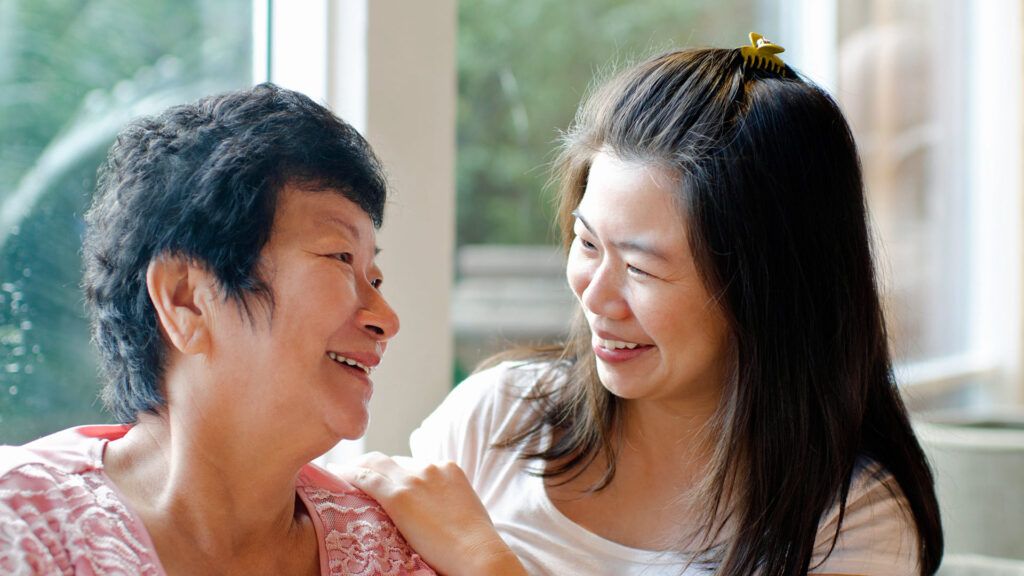Being a caregiver is a wonderful gift. It can be hard to remember the joys of caregiving, however, when you’re stressed about balancing the needs of your loved one with your own needs. Here are a few life hacks for caregivers to make looking after your loved one a little easier.
1) Use tennis balls, foam rollers and rubber bands for a better grip.
One disease that plagues the elderly is arthritis. When a flare up happens, it can cause simple things like using a fork at the dinner table or brushing your teeth to become a painful chore. To make it easier for someone to hold these objects, drill a hole through a tennis ball or remove the plastic center foam from a hair roller. Insert the fork or toothbrush through the opening, so the tennis ball or roller create more cushion and make the objects easier to hold. You can also place rubber bands on glass cups to help with grip.
2) Meal prep a few days in advance.
Research some easy recipes (there are plenty of websites and ideas on Pinterest) and try to plan/cook at least a few meals ahead of time. It’ll relieve some stress and guarantee that the dreaded “What are we doing for dinner?” question will already be answered.
Get practical spiritual advice for everyday challenges in Spiritual Remedies
3) Take a picture of your fridge and pantry before grocery shopping.
Grocery shopping can be a big source of stress for caregivers. Not only do caregivers have to restock their loved one’s fridge, they also have to think about their own family’s grocery list. To make things easier, take a picture of the fridge and pantry, that way when you’re shopping you don’t have to worry about keeping up with lists – you have a visual aid to help you determine what you need. Go a step a further and bring a cooler with you when you go shopping. Do your own shopping at the same time, store your food in the cooler to keep it fresh while you stock up your loved one’s fridge and knock out two birds with one stone.
4) Use Colored Keys.
Use nail polish to paint your keys, distinguishing which key opens which door. This will help you when you’re quickly trying to open locks or get in and out of the house.
5) Use paperclips and yarn to help zip zippers and button clothes.
It’s surprising how big of an issue clothing can be when taking care of someone with arthritis, dementia or Alzheimer’s. Simple tasks like pulling zippers or buttoning shirts can become impossible for elderly family members. If a zipper tab on a jacket or pair of pants is too small to grip, thread a thin piece of yarn or string through the hole and tie a not. The length and loop will make it easier for the person handle. For buttons, take a paper clip and uncurl it; attach the separate ends to the handle of a plastic spoon and tape them down. You can use the wired loop end of the paperclip to poke through the button hold, hook around the button and then pull through.
6) Use motion sensors and foam stoppers to keep the elderly from wandering outside or getting locked in.
People with Alzheimer’s and dementia often wander, sometimes right out the front door. Make sure you have motion sensors or a doorbell that chimes whenever it’s opened so you can be aware of who’s going in and out of the house. Another thing that helps ease anxiety and the wandering habit are calming images. Consider placing peaceful photos near doors and in hallways. The idea is that if your loved one is constantly seeking an exit and confused about where they are, these images will relax and reassure them, offering familiarity and comfort.
Doors that automatically lock can be another danger to the elderly because they might be locked in a room. Consider placing foam stoppers near the top of any doors in your home or cut a pool noodle in half and position it at the top of bathroom, bedroom and closet doors.
7) Light up hallways and stairs for safety at night.
People with Alzheimer’s may lose visual perception as the disease progresses. This means that simple things like going up and down stairs or making a late night bathroom trip can become hazardous. Highlight the edges of steps with lights or glow-in-the-dark tape to help them navigate stairs in your home and consider buying nightlights or motion-activated lights, placing them in a path to frequented places like the kitchen or bathroom. This will ensure your loved one gets to where they need to go safely.
READ MORE: CARING FOR A PARENT WITH ALZHEIMER’S
8) Lock up medicine cabinets.
Administering medicine is a key component in caregiving. There are plenty of apps to help you keep track of your loved one’s daily pill regimen but even more important than making sure you’re on schedule is making sure your loved one can’t access medicine unattended. Buy a lock for the medicine cabinet door or store medicine in a cheap tackle box that you can put out of sight. It may sound unkind, but if you’re caring for a family member with Alzheimer’s or dementia, it’s important that they don’t have unfettered access to the medicine cabinet to avoid accidental overdoses.
9) Use music to keep loved ones calm.
Diseases like dementia and Alzheimer’s can cause those suffering to become sensitive, aggressive or depressed easily. Often, music has been proven to relieve stress in patients, calm them down and help boost their mood. Consider making a positive playlist filled with some of their favorite music to help calm a loved one down when they’re feeling anxious.
10) Remove floor rugs and runners.
Floor rugs may be fashionable but they’re not practical when it comes to elderly living. One of the leading causes of accidents and injuries among older people is tripping and falling. The best thing to do is remove anything underfoot that could cause your loved one to lose their balance but if getting rid of rugs and runners isn’t an option, at least tape them down to the floor to make sure they won’t cause problems.





